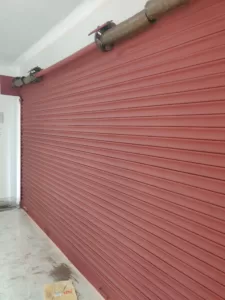
Topcoats or paints do not adhere very well to metal surfaces when applied directly compared to porous substrates, such as wood and masonry. Sometimes the adhesion is very little, and hence the paint application tends to be poor. Many exposed metals or untreated metal surfaces have sheen or glosses to them. This makes it very difficult for standard paints to adhere to.
Ferrous surfaces are also prone to rust. Air and water combine with the metal surface to not only corrode the metal surface but cause a weakening. This can lead to a breakdown of the metal, and the peeling away of paint rapidly. Rust gets started in small crevices, open joints, or cracks. They can spread under the paint, and often build up to a point that pushes the paint off.
Therefore it is important that good quality, properly formulated metal primers be used as a first coat. Urbane Coats red oxide metal primer is one of the best primers that serves both the purposes
Metal primers primarily serve two main purposes
First, they act as a bonding agent that allows the adhesion of the paint to the bare metal. Primers contain extenders that are solid components that add weight to the solution and give paints increased durability. Essentially, they are sticky, flat precoating that is designed to create the bond between the metal surface and the paint. It will provide a binding layer for a level and even paint topcoat application. They also lead to improved coverage ratios.
Different metals have varying degrees of porosity. Primers need to be matched to the surface of application. Some are specifically made to adhere to heavy and dense surfaces. A proper coat of primer allows for an easy application of the paint.
Second, it increases metal’s resistance against corrosion. Primers contain several elements that are effective in sealing and protecting metal. They make metals more resistant to corrosion causing agents like humidity, rain and salt.
The term coating is a more descriptive word for the protective nature of the substance as it helps combat corrosion and improves surface properties.
Metal primers application
It is a best practice to remove rust from metal surfaces through grinding, cleaning, and wire brushing before priming and painting the surfaces. If the metal has been painted before, scrape the paint off. Also, remove existing rust with sandpaper. Clean and free the surface of remaining particles of the debris before applying primer.
Primer must be cured not just dried. The solvent should flash off, and properly cured else there could be off gassing underneath your finish and lead to a non-uniform surface. Most primers have a minimum recommended dry to re-coat time.It is a good practice to coat primed objects as quickly as possible, but if the surface is subjected to contaminants or dirt, scuffing and removing the part prior to top-coating is advisable.
Primers while not always aesthetically pleasing, form a binding layer. They aid in corrosion protection along with providing improved surface properties for the top coat